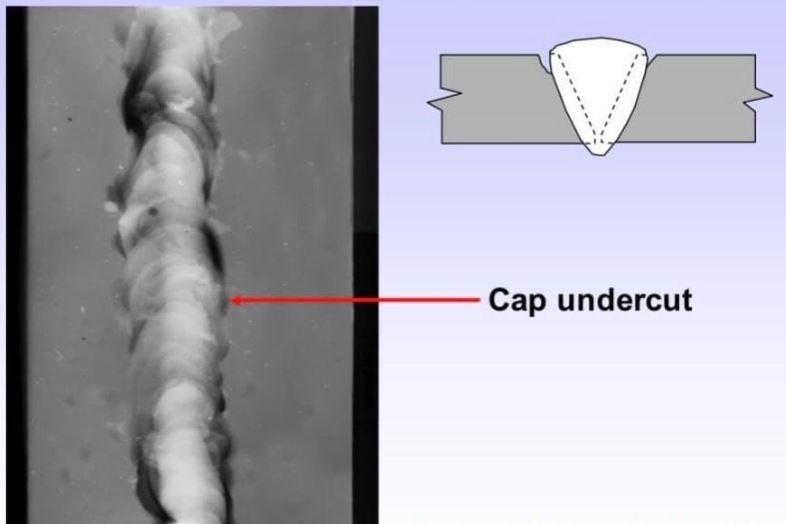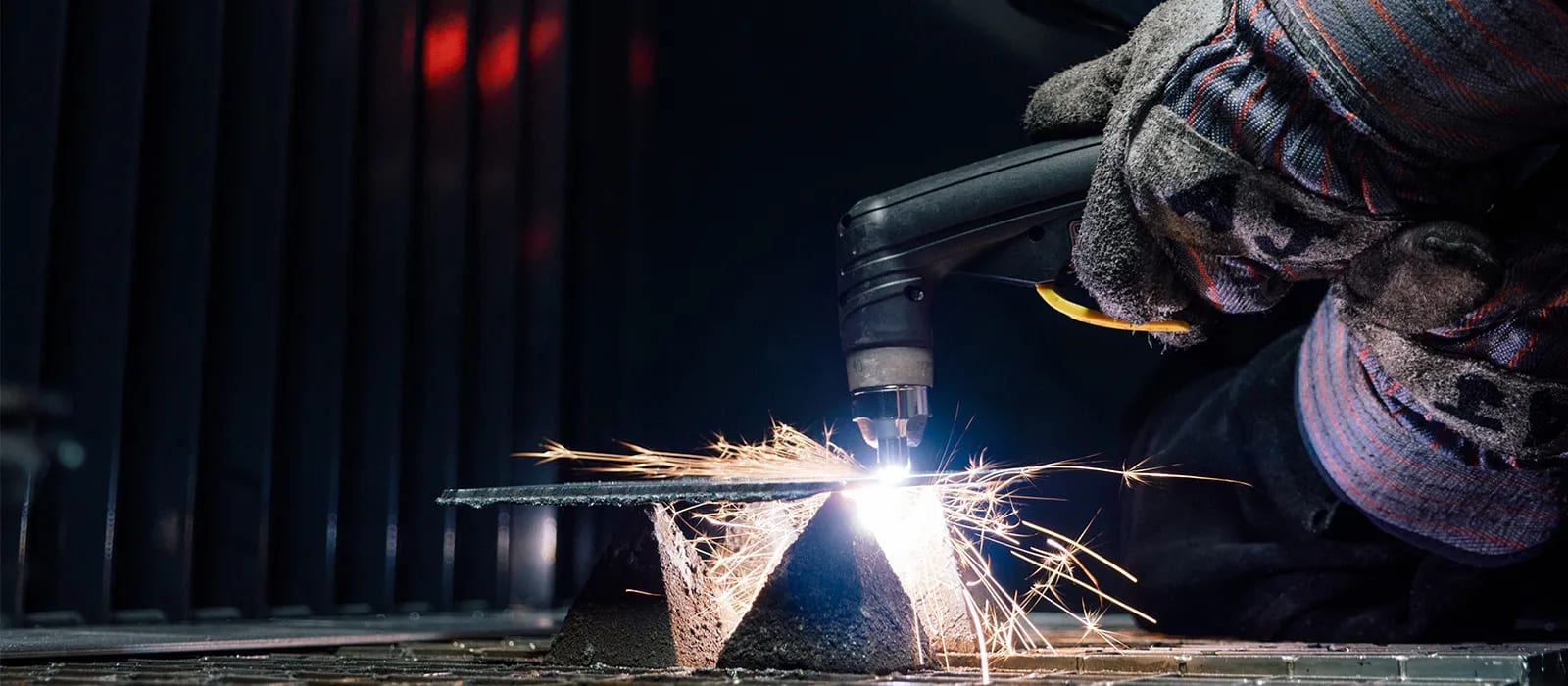Preventing Weld Undercut Made Easy: Secret Techniques Introduced
Preventing Weld Undercut Made Easy: Secret Techniques Introduced
Blog Article
Important Tips for Welders: Protecting Against Undercut Welding and Ensuring Stronger Weld Joints
In the realm of welding, attaining long lasting and strong weld joints is the foundation of creating premium job. One typical challenge that welders frequently run into is undercut welding, which can compromise the stability of the weld joint.

Understanding Undercut Welding
Undercut welding is an usual welding defect that happens when the weld steel stops working to properly fill the groove and leads to a groove-like clinical depression along the weld bead. This problem weakens the weld joint, making it prone to splitting and failing under anxiety. Damaging can be brought on by numerous elements, consisting of excessive welding present, high welding speed, improper electrode angle, inaccurate electrode dimension, and poor welding method.
One of the main reasons for undercut welding is an imbalance in between the welding current and the welding speed. If the welding current is too high or the welding rate is as well quickly, the weld steel might not appropriately load the groove, resulting in damaging. Furthermore, making use of an electrode that is too large can cause a similar end result, as the excess metal can not correctly move into the groove.
To prevent undercut welding, welders should guarantee they are using the appropriate welding specifications, preserve a suitable electrode angle, choose the appropriate electrode dimension, and technique appropriate welding methods. By attending to these variables, welders can decrease the risk of undercutting and create stronger, much more reliable weld joints.
Correct Welding Method
Effective welding technique plays a vital function in ensuring the top quality and stability of weld joints. Correct welding strategy entails a combination of skill, adherence, and accuracy to ideal methods. One fundamental facet of correct welding strategy is preserving the appropriate angle and range between the welding weapon and the workpiece. Welders should additionally pay close interest to the traveling rate and heat input to avoid concerns like damaging, porosity, or insufficient blend.
Additionally, a stable and consistent hand activity is essential for developing solid and long lasting weld joints. Welders ought to go for smooth, uniform movements to make sure also circulation of the weld product. Appropriate control of the welding gun and filler material is also essential to accomplishing optimum penetration and fusion.
Moreover, managing the warmth input and choosing the appropriate welding criteria based upon the product being bonded are critical aspects in attaining high-grade welds - Preventing weld undercut. Welders must comply with the suggested setups provided by welding treatment specifications and readjust them as needed based on the certain requirements of the job. By mastering correct welding methods, welders can substantially boost the stamina and dependability of their weld joints
Selecting the Right Electrode
When considering the importance of picking the appropriate electrode in welding applications,Maintaining the proper angle and distance between the welding weapon and the work surface is basic. The choice of electrode plays a vital duty in figuring out the high quality and toughness of the weld joint. Electrodes can be found in different types, each developed for particular objectives and materials.
First of all, selecting the proper electrode size is necessary. Thinner electrodes appropriate for welding slim materials, while thicker electrodes are much better for thicker products and greater warm applications. Matching the electrode size to the density of the work read this surface assists achieve a well balanced weld.
Secondly, recognizing the material structure of the electrode is vital. Different electrodes are created for welding details materials like steel, stainless steel, aluminum, or cast iron. Utilizing the appropriate electrode product guarantees good blend and decreases the threat of flaws in the weld.
Finally, taking into consideration the welding position and technique is important when choosing the electrode type. As an example, particular electrodes are better fit for overhead or upright welding settings, while others function well for flat or horizontal settings. Choosing the appropriate additional info electrode based on the welding technique boosts the overall weld high quality and honesty.
Preparing the Base Steel
To ensure a successful welding procedure, what initial steps should be taken when preparing the base steel for welding? Properly preparing the base steel is important for accomplishing strong and resilient weld joints. The initial step in preparing the base metal is to clean it thoroughly to get rid of any kind of impurities such as rust, dust, oil, or paint. This can be done utilizing a wire chemical, mill, or brush solvents. Furthermore, any existing weld material or deposit from previous welding need to be eliminated to guarantee a clean surface area for the new weld.

Performing Post-Weld Assessments

After conducting these evaluations, welders should contrast the outcomes against market requirements and project demands to ensure that the weld joint meets all needed standards. Any type of insufficiencies or discrepancies discovered during the post-weld assessment should be without delay resolved through proper corrective procedures to ensure the weld's integrity. By vigilantly doing post-weld inspections and immediately addressing any issues, welders can promote the high quality and dependability of their work, ultimately adding to the security and durability of the welded structures.
Verdict

Finally, stopping undercut welding and guaranteeing stronger weld joints call for a mix of appropriate welding technique, picking the ideal electrode, preparing the base metal correctly, and conducting post-weld inspections. By understanding the sources of undercut welding and implementing the required safety measures, welders can generate high-quality weld joints that meet market standards and make sure the architectural honesty of the welded components.
Undercut welding is an usual welding problem that happens when the weld metal fails to properly fill the groove and results in a groove-like clinical depression along the weld grain (Preventing weld undercut). Undercutting can be triggered by different aspects, including extreme welding existing, high welding speed, inappropriate electrode angle, inaccurate electrode dimension, and poor welding technique
One of the major factors for undercut welding is an inequality in between the welding present and Continue the welding rate. If the welding current is too high or the welding rate is as well quickly, the weld metal might not adequately fill the groove, leading to damaging.Maintaining the right angle and range in between the welding gun and the workpiece is basic when considering the significance of choosing the best electrode in welding applications.
Report this page